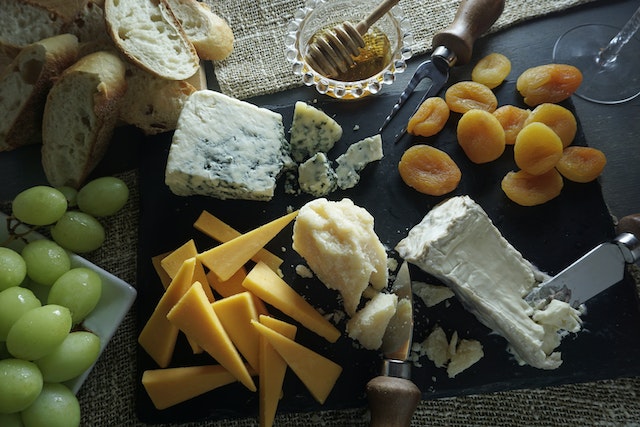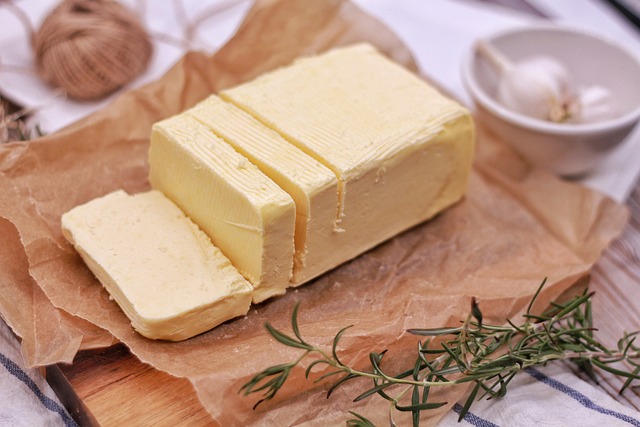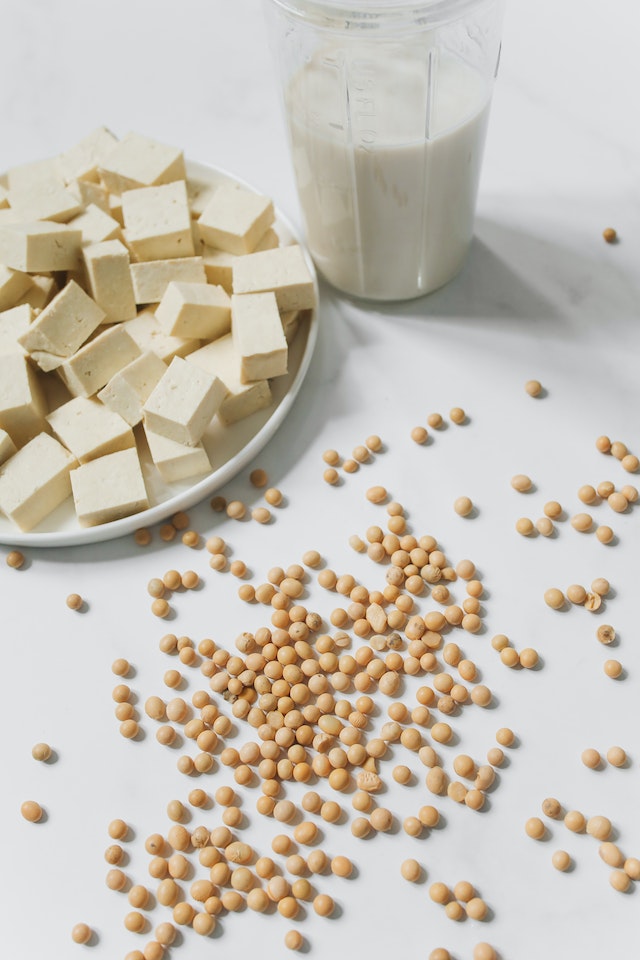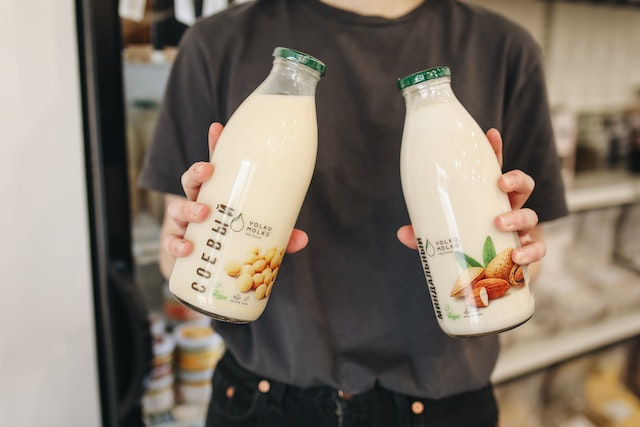
Dairy has been an integral part of cooking and culinary traditions worldwide for centuries. From the creamy texture of cheese to the savory richness of butter, dairy products have a unique ability to elevate dishes and bring forth complex flavors. Across the globe, dairy products play a vital role in various cuisines, from the French fondue to the Indian paneer.
But beyond their culinary importance, dairy products offer a range of nutritional benefits. They’re rich in calcium, vitamin D, protein, and several other essential nutrients. Dairy ingredients also have incredible versatility, allowing them to be used in a wide variety of cooking techniques. From thickening soups and sauces to creating light and airy desserts, dairy products enhance the consistency, flavor, and nutritional value of many dishes.
The connection between dairy and cooking techniques is also significant. The technique of making cheese is a prime example of how dairy has shaped global culinary traditions. From aged cheddar to soft brie, various cheese-making techniques and cultures have evolved over the years, with each creating unique flavors and textures.
Overall, dairy products continue to be a crucial component of contemporary cuisine, adding depth, richness, and nutrition to countless dishes.
Common Dairy Ingredients and Their Uses
Dairy is a versatile ingredient that can be used in a variety of dishes. Here are some of the most common dairy ingredients and their uses in the culinary world:
Milk
Milk is a staple in many households and is used in various ways in cooking. It can be an ingredient in desserts, soups, sauces, and drinks. Milk can also be used as a marinade for meat to tenderize it.
Cream
Cream is a thicker and richer dairy product than milk. It has a high-fat content and can enhance the flavor and texture of dishes. Cream is often used to make whipped cream, sauces, and soups. Heavy or double cream is perfect for making more decadent dishes, like ice cream and custards.
Butter
Butter is a solid dairy product that can be used in baking, cooking, and spreading. It adds flavor and richness to a wide range of dishes and is often used to sauté vegetables, fry eggs, toast bread, and make sauces.

Cheese
Cheese is perhaps the most famous dairy product, with many different varieties available to choose from. It is a valuable ingredient in cooking, adding flavor, texture, and aroma to many dishes. Cheese can be melted, grated, or sliced and is often used as a topping for pizza, baked casseroles, and pastas.
Yogurt
Yogurt is a dairy product that has multiple health benefits, including the presence of probiotics that improve gut health. It is often used as a breakfast food, as a topping for granola and fruit, or as a marinade for meat. Yogurt also serves as a great ingredient in dips and sauces.
Dairy Substitutes and Alternatives
While dairy products offer unique flavors and nutritional benefits, they may not be suitable for everyone. Some people may have lactose intolerance, a milk allergy or may choose to follow a vegan lifestyle. However, there are several dairy substitutes and alternatives available that can replace the creamy, rich texture of dairy in cooking and baking. Here are some of the most common dairy substitutes and alternatives:
Plant-based Milk
Plant-based milk is a popular dairy alternative that can be made from various sources, such as soy, almond, coconut, oat, hemp, or rice. These milk alternatives are often fortified with calcium and vitamin D, two essential nutrients that are also present in dairy products. Plant-based milk can be used in many recipes that call for milk, such as hot cocoa, smoothies, and baked goods.
Non-dairy Cream
Similar to milk, non-dairy cream is available in various forms, such as soy, coconut, or almond cream. It can be used to thicken soups, sauces, and creamy desserts, and can also be whipped like dairy cream to make toppings or fillings.
Vegan Butter
Vegan butter is a dairy-free spread that is made from plant-based oils and is free from any animal products. It can be used in cooking and baking as a substitute for dairy butter and offers a similar flavor and texture.
Nutritional Yeast
Nutritional yeast is a deactivated yeast that is commonly used as a cheesy flavoring in vegan dishes. It is often used as a substitute for grated parmesan cheese and can be sprinkled on top of pastas, salads, and pizzas.
Tofu
Tofu is a plant-based protein that has a mild flavor and a versatile texture that can mimic dairy products like cream cheese and ricotta cheese. Tofu can be blended or crumbled and used in dips, spreads, and desserts.
Aquafaba
Aquafaba is the liquid leftover from cooked chickpeas or other legumes. It can be whipped into a foam that mimics the texture and properties of egg whites, making it a useful dairy substitute in vegan marshmallows, meringues, and macarons.

Coconut Cream
Coconut cream is a rich and creamy dairy alternative that can be substituted for heavy cream in many recipes. It is especially useful in Thai and Indian curries, creamy soups, and desserts.
Dairy products may be an integral part of traditional cooking and culinary traditions, but with the availability of several dairy substitutes and alternatives, anyone can enjoy creamy, rich, and flavorful dishes without the use of dairy. These options provide a range of nutritional benefits and can be used in cooking and baking in much the same way as their dairy counterparts.
Cooking Techniques and Dairy
Dairy is a versatile ingredient that can be incorporated into various cooking techniques to enhance the flavor, texture, and nutritional content of dishes. From creamy soups to rich desserts, dairy products can be used in many ways to elevate and add complexity to dishes. Here are some examples of how dairy can be used in different cooking techniques:
Incorporating Dairy in Sauces and Soups
Cream-based sauces (e.g., béchamel, Alfredo): Cream-based sauces are a staple in Italian cuisine and can transform a simple pasta dish into a creamy, indulgent meal. Béchamel sauce, also known as white sauce, is made by whisking milk, butter, and flour together and is the building block for several tomato-based sauces. Alfredo sauce, one of the most famous cream-based sauces, is made by combining heavy cream, butter, garlic, and parmesan cheese, creating a luxurious sauce that pairs well with fettuccine noodles.
Creamy soups and bisques: Creamy soups and bisques are comforting dishes that are perfect for colder weather. The creaminess is usually achieved by adding heavy cream, half-and-half, or crème fraîche at the end of cooking. Tomato bisque, clam chowder, and potato soup are some examples of soups that can be made creamy by adding dairy.
Baking with Dairy

Importance of dairy in baked goods (e.g., cakes, pastries): Dairy plays a crucial role in baking, adding moisture, tenderness, and richness to baked goods. Milk, cream, and butter are commonly used in cakes, pastries, and cookies, producing a delicate and moist crumb. Without dairy, baked goods can become dry and dense.
Tips for achieving tender and moist results: To achieve tender and moist results, it’s essential to use the right amount of fat in the recipe.
Too little, and the baked goods will be dry, while too much can make them greasy. Another tip is to use room temperature dairy products when baking. Cold butter or milk can affect the texture of the dough and make it harder to blend the ingredients.
Dairy in Savory Dishes
Cheese in casseroles, gratins, and pasta dishes: Cheese is a versatile dairy product that can be used in savory dishes to add flavor, texture, and creaminess. It melts beautifully and can be used to make casseroles, gratins, and pasta dishes. Sharp cheddar cheese adds depth to mac and cheese, while parmesan cheese complements the tomato sauce in lasagna.
Butter for sautéing, basting, and flavoring: Butter is a classic kitchen staple that can be used in various ways to enhance the flavor and texture of savory dishes. It can be used for sautéing vegetables, basting meat, and flavoring rice and pasta dishes. Adding a dollop of butter to a dish can create a rich and savory taste that complements many flavor profiles.
Dairy in Desserts and Sweets
Creamy desserts (e.g., custards, mousses): Dairy is often used in creamy desserts like custards, puddings, and mousses. The creaminess of these desserts comes from the addition of cream, milk, or eggs. Custards like crème brûlée and custard pies are creamy and rich, while mousses like chocolate mousse are light and fluffy.
Whipped cream and cream cheese frostings: A classic topping for desserts, whipped cream is light and fluffy and the perfect addition to pies, cakes, and fresh fruit. It’s made by whisking heavy cream until soft peaks form and can be flavored with vanilla, sugar, or other extracts. Cream cheese frosting is another popular topping for cakes, cupcakes, and cinnamon rolls. It’s made by combining cream cheese, butter, and powdered sugar, creating a tangy and sweet frosting.
Health Considerations and Dairy
Dairy products are an excellent source of essential nutrients, including calcium, vitamin D, and protein. However, some people may have health considerations that require them to limit or avoid dairy consumption.
Lactose Intolerance
Lactose intolerance is a common condition in which people cannot digest lactose, a sugar found in milk and other dairy products. Symptoms of lactose intolerance include bloating, gas, and stomach cramps. People with lactose intolerance can still consume small amounts of lactose, but they should choose lactose-free dairy products or lactase enzyme supplements.
Milk Allergy
Milk allergy is an adverse immune reaction to the proteins found in milk. Symptoms can range from hives, swelling, and difficulty breathing in severe cases. People with milk allergies should avoid all dairy products and use non-dairy alternatives.
Vegan and Plant-Based Diets
Vegans and individuals following a plant-based diet avoid all animal products, including dairy. It’s important for these individuals to consume adequate amounts of calcium, vitamin D, and protein through plant-based alternatives like leafy green vegetables, fortified plant milks, and soy products.

Choosing the Right Dairy Products
When choosing dairy products, it’s essential to consider the fat content and added sugars. Full-fat dairy products, like whole milk and cream, are higher in calories and saturated fat. Low-fat or fat-free dairy products are a better option for those who are trying to limit their intake of saturated fat.
Added sugars are also present in many dairy products, especially flavored yogurts, sweetened milk alternatives, and ice cream. Choose plain or unsweetened alternatives and add fruits or natural sweeteners instead.
Incorporating Dairy Alternatives
Many dairy alternatives are available for those who cannot or choose not to consume dairy. Plant-based milks, like soy, almond, or oat, are rich in calcium and can be used in the same cooking and baking applications as dairy milk. Non-dairy cream and butter alternatives are available for use in cooking, baking, and spreading, while nutritional yeast can provide a cheesy flavor in vegan dishes.
Storage and Shelf Life of Dairy Products
Dairy products are perishable and require proper storage to maintain their freshness and quality. Improper storage can lead to spoilage, off-flavors, and the growth of harmful bacteria. Here are some guidelines for storing dairy products:
Milk
- Store milk in the refrigerator, at a temperature of 40°F or below.
- Keep milk in its original container to prevent exposure to light, which can affect its flavor.
- Do not freeze milk, as it can cause the milk to separate and change texture.
Cream
- Store cream in the refrigerator, at a temperature of 40°F or below.
- Keep cream in its original container and avoid shaking or stirring it excessively, which can cause it to become whipped.
- Heavy cream can be frozen, but may separate when thawed. Use frozen heavy cream for cooking and baking, rather than for whipping.
Butter
- Store butter in the refrigerator, at a temperature of 40°F or below.
- Butter can also be stored in the freezer for up to 6 months. To prevent freezer burn, wrap butter tightly in plastic wrap or foil.
- Unsalted butter has a shorter shelf life than salted butter, as salt acts as a preservative. Salted butter can last up to four months in the refrigerator, while unsalted butter may only last for two to three months.
Cheese
- Cheese should be stored in the refrigerator, at a temperature of 40°F or below.
- Hard cheeses, such as cheddar or parmesan, can last for several weeks in the refrigerator if stored properly. Wrap cheese tightly in wax paper or plastic wrap to prevent it from drying out.
- Soft cheeses, such as brie or camembert, have a shorter shelf life and should be consumed within a few days of purchasing. Store soft cheese in its original packaging until it is ready to be eaten.
Yogurt
- Store yogurt in the refrigerator, at a temperature of 40°F or below.
- Check the expiration date on the container before consuming, as yogurt has a relatively short shelf life compared to other dairy products.

- Once opened, yogurt should be consumed within one to two weeks.
In addition to proper storage, it is important to pay attention to expiration dates and use-by dates when purchasing and consuming dairy products. Consuming dairy products that have expired or passed their use-by date can lead to foodborne illness and should be avoided.
Dairy products have been an essential part of culinary traditions worldwide for centuries due to their unique ability to elevate dishes and bring forth complex flavors. Dairy offers a range of nutritional benefits and versatility, making it an excellent ingredient for a wide variety of cooking techniques. However, it’s crucial to consider health considerations and storage guidelines when consuming dairy products. With dairy substitutes and alternatives widely available, anyone can enjoy the creamy, rich, and flavorful dishes without the use of dairy. Whether you choose to consume dairy or opt for dairy-free alternatives, incorporating dairy products into your cooking can take your dishes to the next level.
